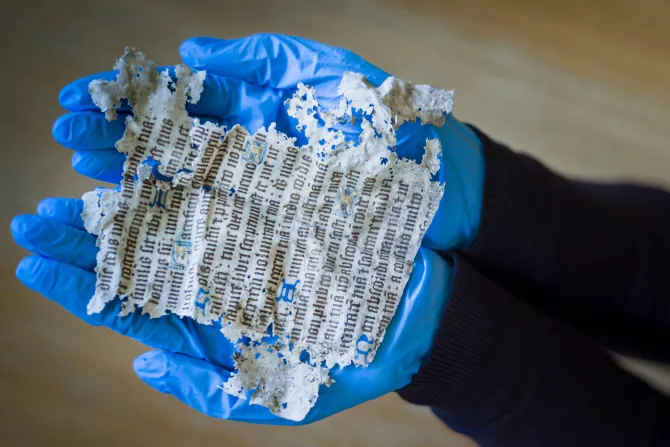
After the government imposed a nationwide lockdown to prevent the spread of the coronavirus virus in March, independent archaeologist Matt Champion (pictured above) agreed to continue working, wearing full personal protective equipment and observing social distancing.
He conducted a "fingertip search" under the boards: a painstaking examination of an area that involves crawling along the floor.
Delving into ancient rats' nests in the northwest corner of the house, he discovered hundreds of artifacts, including scraps of handwritten music from the 16th century. The music may have been played during secret Masses at the house.
When builders returned to the property, which is maintained by the National Trust, they discovered an almost intact book known as the King's Psalms (pictured below), printed in London in 1568. Previously only one copy of the book was known to have survived. It is kept in the British Library.

The book, which was found in an attic void, was written by St. John Fisher, the Catholic Bishop of Rochester who was executed by order of Henry VIII in 1535.
Researchers hope that the discoveries will eventually be displayed in the house, which has reopened to visitors following the easing of lockdown measures. The house is still partially occupied by members of the Bedingfeld family.
Russell Clement, general manager at Oxburgh Hall, said: "These objects contain so many clues which confirm the history of the house as the retreat of a devout Catholic family, who retained their faith across the centuries. We will be telling the story of the family and these finds in the house, now we have reopened again following lockdown."
"This is a building which is giving up its secrets slowly. We don't know what else we might come across -- or what might remain hidden for future generations to reveal."
All photos courtesy of the National Trust. The portrait of Sir Henry Bedingfeld was photographed by Jim Woolf.
(Story continues below)
Subscribe to our daily newsletter



